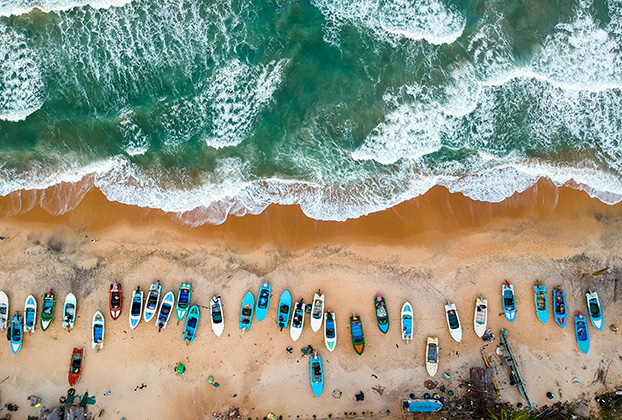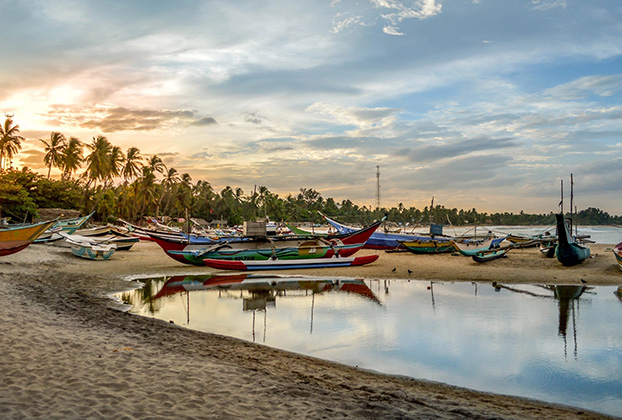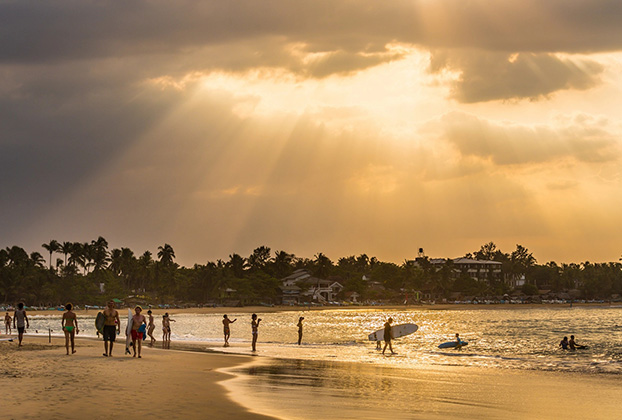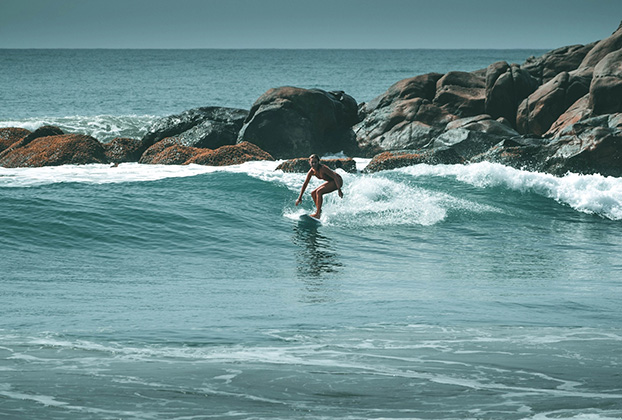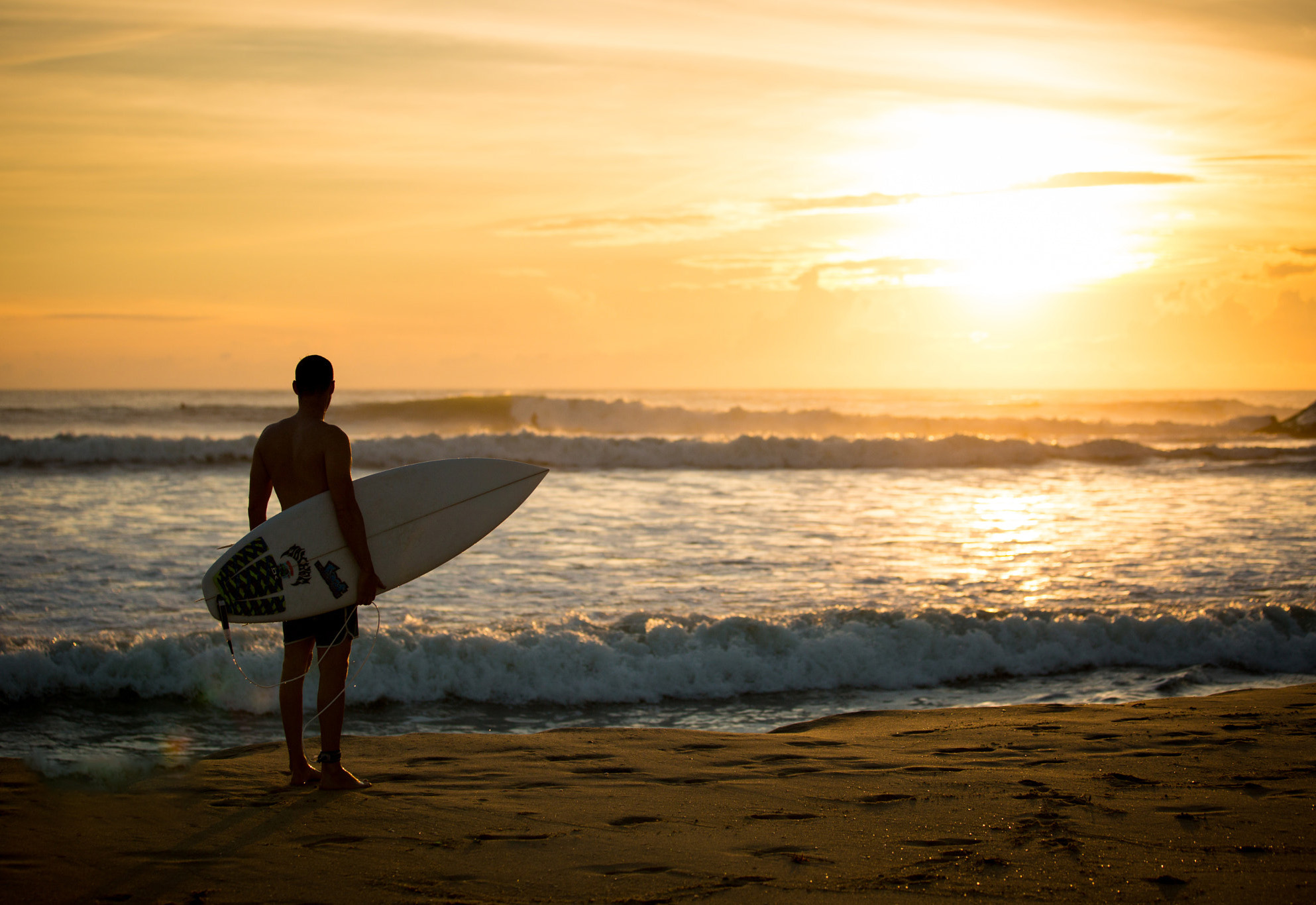
Arugam Bay
East Coast Surf Haven & Laid-back Vibes
Arugam Bay, often called A-Bay, is Sri Lanka’s premier east coast surf destination, famed for its world-class right-hand point breaks and relaxed, international surf town atmosphere. Nestled along the dry zone plains, this laid-back village draws surfers and beach lovers alike with its warm waters, inviting waves, and vibrant surf culture.
While surfing is the main attraction, Arugam Bay offers more than just waves—nearby natural parks and tranquil lagoons provide wildlife adventures, and stunning viewpoints like Elephant Rock reward visitors with breathtaking coastal vistas.
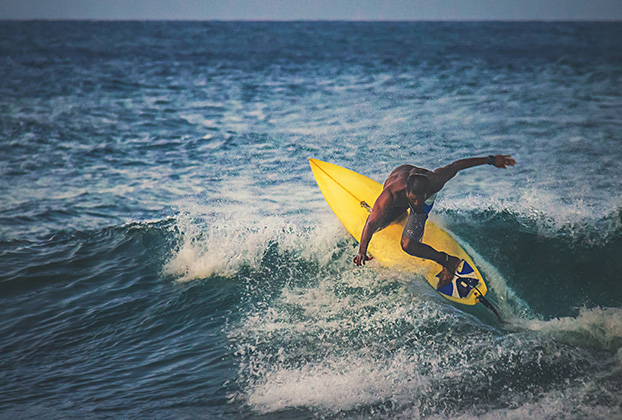
Top Things to See & Do
Surfing at Arugam Bay
Main Point: The iconic, powerful right-hand break for experienced surfers.
Baby Point: Smaller, gentler waves ideal for beginners.
Whiskey Point & Pottuvil Point: North of the main beach, offering breaks for various skill levels.
Peanut Farm & Elephant Rock: South of A-Bay, accessible by tuk-tuk or scooter, with waves for intermediates and beyond.
Numerous surf schools and rental shops line the main beach for lessons and equipment.
Kumana National Park Safari
A short drive away, Kumana rivals Yala with abundant birdlife, elephants, crocodiles, and, if lucky, leopards and sloth bears.
Lagoon Safari (Pottuvil Lagoon)
Enjoy peaceful boat trips through mangrove-lined lagoons, spotting crocodiles, birds, and monitor lizards, best at sunrise or sunset.
Elephant Rock
A scenic viewpoint south of Arugam Bay with panoramic coastline views—spectacular at dawn or dusk, sometimes with wild elephants in sight.
Getting to Arugam Bay from Colombo
By Car / Private Transfer (Most Convenient):
From Bandarawela, about 140–160 km, approximately 3.5 to 4.5 hours via Wellawaya and Monaragala.By Bus (Budget-Friendly but Longer):
Take a bus Bandarawela → Wellawaya (1–1.5 hours), then Wellawaya → Pottuvil (2.5–3.5 hours). From Pottuvil, tuk-tuk to Arugam Bay (~15 mins). Total bus travel can be 4.5 to 6+ hours.By Train:
No direct train route exists. Train travel is impractical due to circuitous routes and long duration.
Best Time to Visit
Arugam Bay’s climate revolves around the east coast’s dry zone seasonal pattern:
April to October: Peak Season & Surfing Season
Dry weather, plenty of sunshine, and consistent surf swells make these months ideal. Temperatures hover between 30°C to 34°C (86°F to 93°F). July and August typically deliver the best waves.November to March: Off-Season & North-East Monsoon
Expect frequent, heavy rain, rough seas, and strong onshore winds. Surfing conditions deteriorate and many businesses close. While quieter, this period is not recommended for surfing or beach holidays here (though it’s peak season on the south coast).
Weather & Travel Tips:
Pack light, breathable clothing and swimwear.
Use high-SPF sunscreen, wear a hat, sunglasses, and rash guards for surf protection.
Stay well hydrated.
Mosquito repellent is essential in the humid evenings near lagoons.
Comfortable sandals or flip-flops are sufficient footwear.
Beginners should stick to Baby Point; other breaks require intermediate or advanced skills.
Local Tips & Insights
Embrace the distinct surf town vibe—laid-back and international.
During Ramadan, some restaurants may have limited hours due to the significant Muslim community.
ATMs exist but can be unreliable or empty; carry cash as backup.
Renting a scooter is popular for exploring surf spots and nearby attractions; always wear a helmet and carry a valid license.
Respect local customs: dress modestly away from the beach and ask permission before photographing locals.
Support small family-run guesthouses and eateries to benefit the local economy.
Power outages can happen; a power bank is useful.
Even non-surfers will enjoy the beaches, lagoon safaris, nearby temples, and Kumana National Park excursions.

